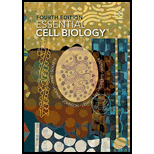
A.
To predict: The genotypes of the A, B, and C plants.
Concept introduction: Gregor Johann Mendel (1822–1884) is the “Father of genetics”. He carried out his experiment on Pisum sativum (pea plant). He discovered mainly three laws of heredity. They are “The Law of Dominance”, “The Law of Segregation”, and “The Law of Independent Assortment”. Genes are the DNA sequences that can control a particular trait. Alleles are the different forms of a particular gene, and they can occur in pairs. They can be classified into dominant or recessive and homozygous or heterozygous. Homozygous organism carries two copies of the identical allele, while heterozygous organisms carry two dissimilar alleles in one copy. Genotype is the total genetic composition of an individual, while
B.
To conclude: Whether the A, B, and C plants carry a mutation in the same gene.
Concept introduction: Gregor Johann Mendel (1822–1884) is the “Father of genetics”. He carried out his experiment on Pisum sativum (pea plant). He discovered mainly three laws of heredity. They are “The Law of Dominance”, “The Law of Segregation”, and “The Law of Independent Assortment”. Genes are the DNA sequences that can control a particular trait. Alleles are the different forms of a particular gene, and they can occur in pairs. They can be classified into dominant or recessive and homozygous or heterozygous. Homozygous organism carries two copies of the identical allele, while heterozygous organisms carry two dissimilar alleles in one copy. Genotype is the total genetic composition of an individual, while phenotype is the visible characteristics of a person. Dominant is used to describe a strong gene, while recessive is used to describe a weak gene. Recessive mutations will not activate the gene, and hence it leads to the failure of certain functions. Example: loss-of-function mutations
C.
To predict: The possibilities to generate wrinkled pea plant when mutation occurs in different genes.
Concept introduction: Gregor Johann Mendel (1822–1884) is the “Father of genetics”. He carried out his experiment on Pisum sativum (pea plant). He discovered mainly three laws of heredity. They are “The Law of Dominance”, “The Law of Segregation”, and “The Law of Independent Assortment”. Genes are the DNA sequences that can control a particular trait. Alleles are the different forms of a particular gene, and they can occur in pairs. They can be classified into dominant or recessive and homozygous or heterozygous. Homozygous organism carries two copies of the identical allele, while heterozygous organisms carry two dissimilar alleles in one copy. Genotype is the total genetic composition of an individual, while phenotype is the visible characteristics of a person. Dominant is used to describe a strong gene, while recessive is used to describe a weak gene. Recessive mutations will not activate the gene, and hence it leads to the failure of certain functions. Example: loss-of-function mutations
Want to see the full answer?
Check out a sample textbook solution
Chapter 19 Solutions
Essential Cell Biology (Fourth Edition)
- What is the opening indicated by the pointer? (leaf x.s.) stomate guard cell lenticel intercellular space none of thesearrow_forwardIdentify the indicated tissue? (stem x.s.) parenchyma collenchyma sclerenchyma ○ xylem ○ phloem none of thesearrow_forwardWhere did this structure originate from? (Salix branch root) epidermis cortex endodermis pericycle vascular cylinderarrow_forward
- Identify the indicated tissue. (Tilia stem x.s.) parenchyma collenchyma sclerenchyma xylem phloem none of thesearrow_forwardIdentify the indicated structure. (Cucurbita stem l.s.) pit lenticel stomate tendril none of thesearrow_forwardIdentify the specific cell? (Zebrina leaf peel) vessel element sieve element companion cell tracheid guard cell subsidiary cell none of thesearrow_forward
- What type of cells flank the opening on either side? (leaf x.s.) vessel elements sieve elements companion cells tracheids guard cells none of thesearrow_forwardWhat specific cell is indicated. (Cucurbita stem I.s.) vessel element sieve element O companion cell tracheid guard cell none of thesearrow_forwardWhat specific cell is indicated? (Aristolochia stem x.s.) vessel element sieve element ○ companion cell O O O O O tracheid O guard cell none of thesearrow_forward
- Identify the tissue. parenchyma collenchyma sclerenchyma ○ xylem O phloem O none of thesearrow_forwardPlease answer q3arrow_forwardRespond to the following in a minimum of 175 words: How might CRISPR-Cas 9 be used in research or, eventually, therapeutically in patients? What are some potential ethical issues associated with using this technology? Do the advantages of using this technology outweigh the disadvantages (or vice versa)? Explain your position.arrow_forward
 Human Anatomy & Physiology (11th Edition)BiologyISBN:9780134580999Author:Elaine N. Marieb, Katja N. HoehnPublisher:PEARSON
Human Anatomy & Physiology (11th Edition)BiologyISBN:9780134580999Author:Elaine N. Marieb, Katja N. HoehnPublisher:PEARSON Biology 2eBiologyISBN:9781947172517Author:Matthew Douglas, Jung Choi, Mary Ann ClarkPublisher:OpenStax
Biology 2eBiologyISBN:9781947172517Author:Matthew Douglas, Jung Choi, Mary Ann ClarkPublisher:OpenStax Anatomy & PhysiologyBiologyISBN:9781259398629Author:McKinley, Michael P., O'loughlin, Valerie Dean, Bidle, Theresa StouterPublisher:Mcgraw Hill Education,
Anatomy & PhysiologyBiologyISBN:9781259398629Author:McKinley, Michael P., O'loughlin, Valerie Dean, Bidle, Theresa StouterPublisher:Mcgraw Hill Education, Molecular Biology of the Cell (Sixth Edition)BiologyISBN:9780815344322Author:Bruce Alberts, Alexander D. Johnson, Julian Lewis, David Morgan, Martin Raff, Keith Roberts, Peter WalterPublisher:W. W. Norton & Company
Molecular Biology of the Cell (Sixth Edition)BiologyISBN:9780815344322Author:Bruce Alberts, Alexander D. Johnson, Julian Lewis, David Morgan, Martin Raff, Keith Roberts, Peter WalterPublisher:W. W. Norton & Company Laboratory Manual For Human Anatomy & PhysiologyBiologyISBN:9781260159363Author:Martin, Terry R., Prentice-craver, CynthiaPublisher:McGraw-Hill Publishing Co.
Laboratory Manual For Human Anatomy & PhysiologyBiologyISBN:9781260159363Author:Martin, Terry R., Prentice-craver, CynthiaPublisher:McGraw-Hill Publishing Co. Inquiry Into Life (16th Edition)BiologyISBN:9781260231700Author:Sylvia S. Mader, Michael WindelspechtPublisher:McGraw Hill Education
Inquiry Into Life (16th Edition)BiologyISBN:9781260231700Author:Sylvia S. Mader, Michael WindelspechtPublisher:McGraw Hill Education





